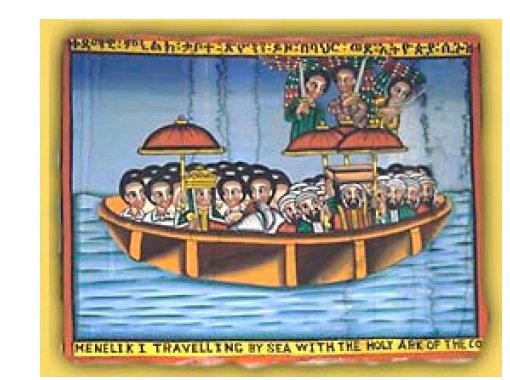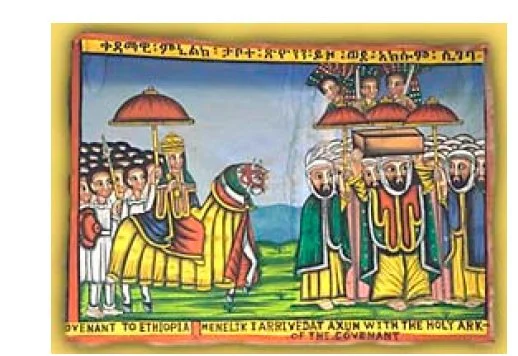The Ark of the Covenant in Ethiopia: The Hidden History of a Lost Legacy
Disclaimer
The intention of this content is to expand awareness about certain places, myths and stories told at some point by humanity. Much of the information may not find scientific basis or contradict current theories. Knowledge, throughout history, is constantly updated, constructed or replaced as there is greater understanding. Therefore, we want to build a serious approach, within free thinking, and in its use in a beneficial way for collective evolution. If you enjoy this type of content consider following us on Instagram and Youtube for more.
Introduction
The history of humanity is full of mysteries that defy understanding and captivate the imagination. One of the most fascinating is the mystery surrounding the Ark of the Covenant, a legendary artifact with deep historical and religious roots. Did the Ark really exist? Could their powers have been real?
In this content, we will explore the history of the Ark of the Covenant and the mysteries surrounding it, including its last known whereabouts, the connection to the Queen of Sheba, and the Kebra Negast, a mysterious Ethiopian book that tells this hidden story.
What is the Ark, According to History?
The Ark of the Covenant is one of the most sacred artifacts in Jewish tradition, with a history that dates back to the times of Moses and the famous episode at the top of Mount Sinai. According to the Bible, Moses, under divine instructions, built the Ark of the Covenant from acacia wood and overlaid it with pure gold. Its interior housed the Tablets of the Law, which contained the Ten Commandments given by God to Moses. The Ark was an object of great power and significance, being considered the earthly dwelling of God. She accompanied the Israelites on their journey through the desert, leading the way and protecting the chosen people.
The Ark of the Covenant was much more than a simple box of gold; it was the tangible link between God and the Israelites, a symbol of His covenant with the Jewish people. She was revered and feared, and only specially consecrated priests were allowed to touch her. Its role in biblical stories, such as the crossing of the Jordan River and the fall of the walls of Jericho, highlights its importance in religious beliefs and Israel's victorious history. This divine and historical connection makes the Ark of the Covenant one of humanity's most compelling mysteries, as its journey and ultimate destination continue to be a source of speculation and fascination to this day.
What is the Ark's last known whereabouts?
The last known whereabouts of the Ark of the Covenant is one of history's most intriguing enigmas. According to biblical records, the Ark was housed in Solomon's Temple in Jerusalem after the temple was built in the 10th century BC. Solomon's Temple was and still is the holiest site in Judaism. The Ark rested in the Holy of Holies, an inner chamber of the temple that only the high priest was permitted to access, and only once a year.
However, in 587 BC, Solomon's Temple was destroyed by the Babylonians under the command of Nebuchadnezzar II. This marks the last historical record of the Ark in the Bible, leaving its fate after the destruction of the temple shrouded in mystery. There is no clear evidence to indicate what happened to the Ark after this event. Some believe she was captured by the Babylonians, while others suggest she may have been hidden to avoid capture, or even stolen. This mystery surrounding the fate of the Ark of the Covenant has instigated the curiosity of explorers, archaeologists and researchers for centuries, fueling theories and expeditions in search of answers.
The Story of Menelik, Queen of Sheba and Solomon
One of the most intriguing narratives surrounding the Ark of the Covenant is the legend that connects Ethiopian royalty to its possession. According to Ethiopian tradition, Menelik, supposedly the son of the legendary King Solomon and the Queen of Sheba, plays a key role in this story. The Queen of Sheba, who ruled a region that today encompasses parts of Ethiopia and Yemen, traveled to Jerusalem to meet wise King Solomon. Biblical accounts and Ethiopian legends state that the queen was impressed by Solomon's wisdom and their love resulted in the conception of Menelik later when she returned to her homeland.
According to legend, Menelik later visited his father in Jerusalem and, upon returning to Ethiopia, supposedly managed to secretly take the Ark of the Covenant. However, it is important to note that the authenticity of this story is widely debated and is not widely accepted by the Jewish community or many scholars. Still, this legend remains an essential part of Ethiopian tradition, supporting the belief that the Ark of the Covenant rests in Africa, which generates a deep sense of pride and devotion in its people.
The Kebra Nagast, the Coptic Bible and the Jews of Ethiopia
The connection between the Ark of the Covenant and Ethiopia is deeply rooted in religious tradition in that country's own churches. The "Kebra Nagast", also known as "The Glorious Line of Kings", is an Ethiopian text that plays a central role in promoting the idea that the Ark of the Covenant is in Ethiopia. This book, which combines history, mythology and religion, tells the story of Ethiopian royalty and their connection with King Solomon and the Queen of Sheba, consolidating the belief that the Ark was brought to Ethiopia by their son Menelik.
And the Queen departed and came to the country of Bâlâ Zadîsârĕyâ, nine months and five days after she had separated herself from King Solomon. And the pains of childbirth came upon her, and she gave birth to a boy, and gave him to his nurse with great pride and joy. And she waited until the days of her purification were over, and then she arrived in her own country with great pomp and ceremony. And her officers who had remained there brought gifts to their lady, bowed to her, and paid homage to her, and all the borders of the country rejoiced at her arrival. Those who were noble among them she clothed with splendid apparel, and to some she gave gold and silver, and purple robes and hyacinth; and she gave them all sorts of things that they could desire. And she commanded her kingdom correctly, and no one disobeyed her commands; for she loved wisdom and God strengthened her kingdom.
And the boy grew up and she called him Bayna-Lehkem (Menyelek, or Menelik). And the boy reached the age of twelve, and he asked his friends from among the boys who were being educated with him, and he said to them, “Who is my father?” And they said to him, “Solomon the King.” And he went to the Queen, her mother, and said to her, “Oh! Queen, let me know who my father is.” And the Queen spoke to him angrily, wanting to frighten him, so that he would not wish to go [to his father], saying: “Why do you ask me about your father? I am your father and your mother; do not seek to know anything more.” And the boy left her presence and sat down. And a second time, and a third time, he asked her, and he pestered her to tell him. One day, however, she spoke to him, saying: “Your country is far away, and the road there is very difficult; Don’t you prefer to stay here?” And young Bayna-Lehkem was handsome, and his whole body, his limbs, and the carriage of his shoulders resembled those of King Solomon his father, and his eyes, his legs, and his entire posture resembled those of Solomon the King.
Kebra Nagast, Glory of Kings, Chapter 32. Page. 63.
Thus spoke King Solomon. And the King rose up in wrath and set out to pursue [the men of Ethiopia]. And when the King, his nobles, and his mighty men of war arose, the elders of Israel, the widows, and the virgins gathered together in the house of God, and wept for Zion, for the Tabernacle of the Law of God had been taken away. from them.
Kebra Nagast, Glory of Kings, Chapter 58. Page. 102.
Furthermore, the Coptic Bible, used by some branches of the Ethiopian Orthodox Church, includes the Ark of the Covenant as an important element of their religious tradition. This version of the Bible contains additional details and stories that reinforce the Ethiopian connection to the Ark.
A very interesting documentary from Timeline addresses this issue, showing the connection between Ethiopian priests and this legend in the real world. Furthermore, Graham Hancock in his book “The Sign and The Seal” also presents the issue in a very deep and inquisitive way. Mystery or not, what could be the reasons for the zeal of these guardians and their relationship with Jewish myths and traditions?
The Jews of Ethiopia also have a unique history with the Ark of the Covenant. Although they are a large Jewish community, they are quite discreet. Could their oral traditions be a key to this enigma?
Controversial Stories Involving the Ark
The Ark of the Covenant is often associated with a number of controversial stories, including conspiracy theories and attempts to find it. Some claims suggest that the Ark is still hidden beneath the Temple Mount in Jerusalem, while others claim that it was transported to distant places like Egypt, or even Canada and North America by pirates and hidden on an island.
The famous Knights Templar also take part in these legends, as for a long time they had the Temple Mount as their main base and carried out extensive excavations there. Numerous reports indicate that much of their wealth and powers were attributed to something beyond this world.
Conclusions
Various explorers and researchers throughout history have undertaken expeditions to locate the Ark, but to this day, its fate remains unknown. The story of the Ark of the Covenant is a fascinating enigma that mixes history, religion and myth. Its religious and cultural significance is undeniable, and its search has captured the imagination of generations.
Although many controversial theories and stories circulate surrounding its fate, the Ark's true location remains shrouded in mystery. Her existence is mentioned in several stories around the world, but where did she go? Who today has this incredible artifact in their custody?
If we look carefully, we can find the answers to this mystery in hidden history and ancient traditions. After all, the truth is out there!



